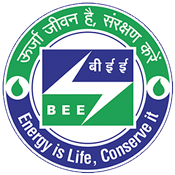
- Posted On: August 24, 2020
Since it’s inception, BEEP has been keen on involving students and young professionals in our efforts to mainstream energy efficient building design. The idea, we work with, is that students of today are the future architects of tomorrow. Focusing on building their capacity today can go a long way in ensuring that the architects that India produces not only forefront ideas of energy efficiency, thermal comfort, and sustainable building design, but they also understand the Indian local context and provide solutions accordingly, along with the quantification of design solutions.
This was the core thrust behind the Building Energy Performance Simulation (BEPS) course that we designed for B. Arch students of Sri Sri University (SSU) in Cuttack. You can read more about how this idea came about in Part 1 of this blog series.
The BEPS course was designed for 6th semester B. Arch students as an elective course. Even though the request for such a course came from the students themselves, we decided that the course should have a couple of prerequisite courses, namely, Climate in Architecture (which is a third semester course) and Building Services – HVAC (which is a fifth semester course). Armed with the knowledge that students got from these courses, we felt that they would be ready for a deep dive into BEPS.
The objective of the course was to introduce students to BEPS, and their capabilities; and how to use BEPS to design Energy Efficient and Thermally Comfortable (EETC) buildings. After participating in this course, students would be able to determine what to model for their design decisions; model a space or building, with inputs on climate, building envelope and space-conditioning system; carry out simulation for thermal comfort and energy use analysis; and analyse, interpret and use the results for design-decision.
The result was an engaging, hands-on 6-month course that Saswati Chetia and Dr. Sameer Maithel from BEEP and Dr. Geeta Vaidyanathan from SSU put together. And I had the pleasure of being the course instructor.
The course was designed as a mix of online and onsite lecture, with quizzes and modelling exercises. However, the unexpected intrusion of the Covid-19 pandemic meant that most of the course had to take place digitally. Fortunately, our orientation class had taken place in January where we were able to carry out the in-house referesher class on the foundation courses.
Anyhow, the course continued to be exciting even after it completely went online. The 3-day in person working sessions on DesignBuilder were especially interesting where students got to understand key inputs and outputs; get weather data; create buildings; define loads; define natural ventilation and simple cooling system; run selective simulation, and get result analysis and it’s interpretation.
The course culminated with a group assignment and succssfully came to a completion in June.
In the next and last part of this blog series, I will delve into some of the insights that came out of this course. Coming to you very soon!
-
- Prashant Bhanware






